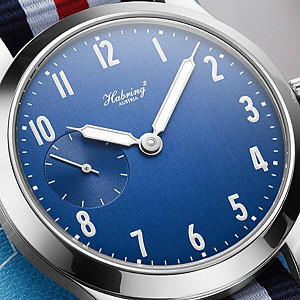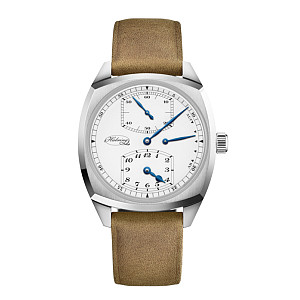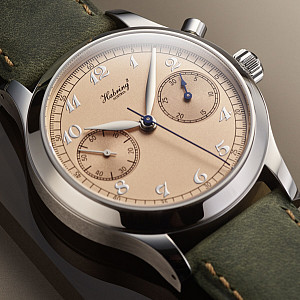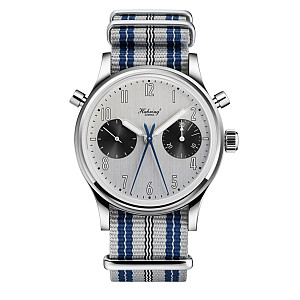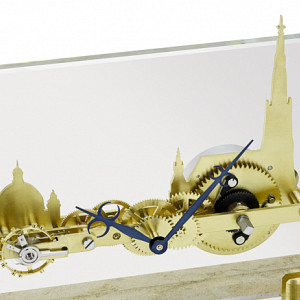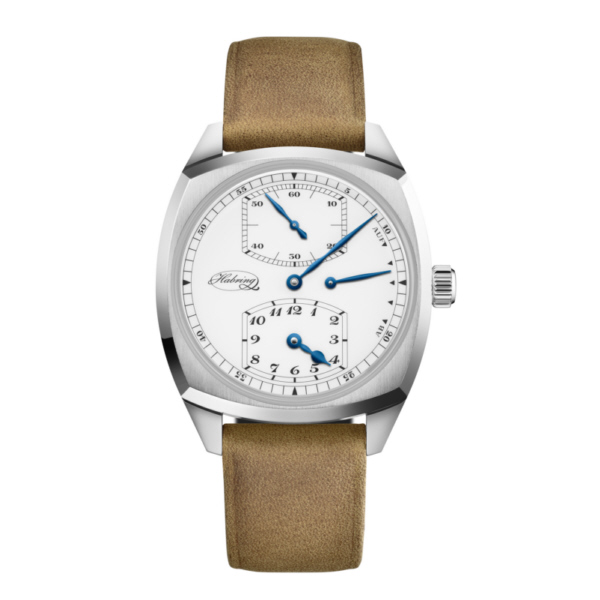History
The first clock ever to bear the "Habring" signature was created in 1985, the first year of Richard's training at the renowned watchmaker's school founded in 1878 in Karlstein an der Thaya in Lower Austria. Whilst every graduate at Karlstein makes one of these regulators to study the methods of manufacture, Richard's teachers soon recognised and nurtured his exceptional talent with further projects. His first draft for a perpetual calendar - produced long before that of any CAD computer - still decorates the school library to this day.
master of the tourbillions
Just over a year after leaving school, Richard returned to Karlstein to sit his Master's examination - and presented, much to the surprise of the examination board, a voluntary masterpiece: a self-designed and self-made minute tourbillon in a tiny inline movement. His inspiration came from a large clock tourbillon built in the 1970s and 1980s by graduates of the Masters course held at Karlstein at the time.
A few handpicked, individual pieces - mainly tourbillons or complicated chronographs - bearing the signature "Richard Habring" were created from 1989 on. Lovingly cared for in the ownership of private collectors, some of them even found their way into specialist literature: for instance, "Das Tourbillion" by Reinhard Meis, published by Callwey. Other tourbillons were awarded considerable bids at auction, for instance at the Antiquorum or at the auction house Dr. Crott. Among those particularly worthy of mention is a double-axis tourbillon from 1996 - the first in the world in pocket watch size - although built into a clock due to its power reserve and reliability.
Günter Blümlein, mentor & patron
Richard's professional development is tightly interwoven with that of Günter Blümlein, his mentor and patron of many years. Many of the complicated movements and "grand complications" developed in co-operation for the brands of erstwhile watch manufacturers holding LMH in the 1990s became best-sellers. In the year of Blümlein's death Richard met and fell in love with Maria Kristina. The couple decided to spend the rest of their private and professional lives together.
start of manufacturing
October 2004 saw the dream of a small watchmaker’s factory become reality with the presentation of the first HABRING². Since then the small collection has grown by just one model per year, of which a maximum of 12 pieces are manufactured. The use of some very special movement rarities and particular design variations and dial variants have made sure many of these hand-made treasures remain unique items.
50 pieces a year is the target
Maria & Richard finsihing every single watch with their own hands. Due to the limited capacity of the family-run business - a HABRING² will continue to be something very special, available only directly from the manufacturer or from a few select partners around the world.
In addition to manufacturing the HABRING², Maria Kristina & Richard Habring also collaborate in selected projects of exclusive manufacturers. The ensuing strategic partnerships will continue to guarantee the pair copious support from within the global horological network.
more complicated models join the small but exclusive collection
Thus, whilst other products also have "Habring inside", utilization in HABRING² is focused on the manufacture of classic, reliable timekeepers with aesthetic appeal - in close co-operation with their subsequent owners. A HABRING² is therefore the exact opposite of contemporary mass production: each one bears not only the maker's mark, but also, to a certain degree, that of its owner. The future will see more complicated models join the small but exclusive collection as a response to technological challenges. The year 2009 will mark the anniversary of "20 Years of Habring Tourbillions" and would be an ideal occasion for a first superlative.


